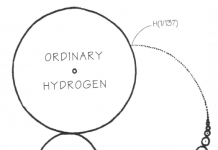Tom Konrad, CFA
Boralex Inc. made an offer to buy out the Boralex Power Income Fund on May 19. The price is reasonable.
Boralex (BLX.TO, BRLXF.PK) announced on May 2 that it would offer C$5 per share in convertible bonds for all outstanding shares of the Boralex Power Income Fund (BPT-UN.TO, BLXJF.PK) that it did not already own in an acquisition approved by both boards. As usual with mergers, the Boralex Power Income Fund’s (“the Fund’s”) unit price jumped from C$4.61 to C$4.90 the next day, but then if started to fall back as people had time to review the precise terms, dropping as low as C$4.51 on May 13 before recovering and always holding over its average values from before the deal was announced. The market particpants seem to believe that this deal adds value for unitholders, but only by a thin margin. What follows is my analysis.
Bid Premium
C$5.00 represents an 11% premium over the Fund’s average unit price of C$4.50 for the preceding 60 trading days. That’s low compared to average bid premiums, which have recently averaged in the low 20%’s. However, the Fund is an income investment, with most earnings returned directly to investors. Becasue of this, investors cannot reasonably expect much appreciation in the fund’s unit price, and a small buyout premium seems justified in this case.
Income
If the Fund’s owners accept a low premium for their income investment, they should not be expected to accept a large drop in income. On the other hand, some drop in income may be justified because of the additional security they will receive as bondholders of Boralex rather than equity holders in the Fund. The Fund is currently paying a C$0.03333 monthly dividend, or C$0.40 annually per unit. The C$5.00 face value, 6.25% debenture offered in exchange will pay C$0.3125 annually, meaning that unit holders who accept the offer will suffer a 21.875% loss of income.
Using the pre-merger average share price of C$4.50, Fund unit holders were previously receiving an 8.89% annual yield, and will now be receiving a 6.94% annual yield, which seems on its face like a bad deal. Yet, as discussed above, the Fund’s unit holders cannot reasonably expect price appreciation given the fund’s current structure, and hence the C$5 face value (which will be redeemed for cash five years after the merger date) should be included in the return calculation. Using a spreadsheet, I calculated the internal rate of return (IRR) of paying C$4.50 today for C$0.3125 for five years, plus C$5 at the end of the period (the “Debentures” column) as well as the same price calculation with the Fund units’ current C$0.40 annual income but no price appreciation.
| Debentures | Year | Fund Units |
| -$4.50 | T=0 | -$4.50 |
| $0.3125 | T=1 | $0.40 |
| $0.3125 | T=2 | $0.40 |
| $0.3125 | T=3 | $0.40 |
| $0.3125 | T=4 | $0.40 |
| $5.3125 | T=5 | $4.90 |
| 8.81% | IRR | 8.89% |
As you can see, the internal rate of return of the offer is 8.81%, within a gnat’s whisker of the expected return without the offer (8.89%). Differing tax rates for some unit holders between the current distributions and interest income may make the offer less attractive to those investors, but the increased security of bondholders compared to unitholders may more than compensate for risk-adverse investors.
An article from the Streetwise column of Globe and Mail on May 12 was skeptical about the offer. This article quoted Connor O’Brien, the Chief Investment Officer of a major holder of the trust, Stanton Asset Management. Mr. O’Brien “calculates that unit holders will receive approximately 50 per cent less after-tax income if they end up holding the convertible bonds, rather that trust units.” This is a red herring. The Fund’s privileged Canadian tax status will end in 2011. Unitholders do not have the option of continuing to receive distributions under the current regime, even if the merger does not go through. The change in tax status is not the result of the merger, it’s the result of the tax law changes which have caused most Canadian Trusts to reorganize in one way or another over the last three years.
Conversion Option
Mr. O’Brian was also concerned about the conversion price. He was also particularly critical of the C$17 conversion price for the bonds, a “70 per cent premium to where the stock was trading in the 30 days prior to the offer for the trust.” He is right that the conversion option adds very little value for Fund unit holders. If you’re trying to decide if this deal is a good value, you should focus on the value of the cash flows, assuming the debentures are redeemed for C$5.00 after five years. The value of the conversion option is small, but positive.
Conclusion
Overall, I believe this is a fair value for unitholders. Maintaining the status quo is not an option. The Fund’s favored tax status will expire at the end of the year, and the fund would have to cut distributions in order to pay the new taxes. The value of the cash flows from the Boralex Power Income Fund units and the convertible debentures offered by Boralex are roughly equivalent, and the (small) value of the conversion option adds a little spice to the mix.
This conclusion seems to be confirmed by market action. Fund units have been consistently trading for more than they were before the merger announcement, while the S&P/TSX Composite Index has fallen 5% since the merger was announced.
DISCLOSURE: LONG Boralex Power Income Fund.
DISCLAIMER: The information and trades provided here are for informational purposes only and are not a solicitation to buy or sell any of these securities. Investing involves substantial risk and you should evaluate your own risk levels before you make any investment. Past results are not an indication of future performance. Please take the time to read the
full disclaimer here.





